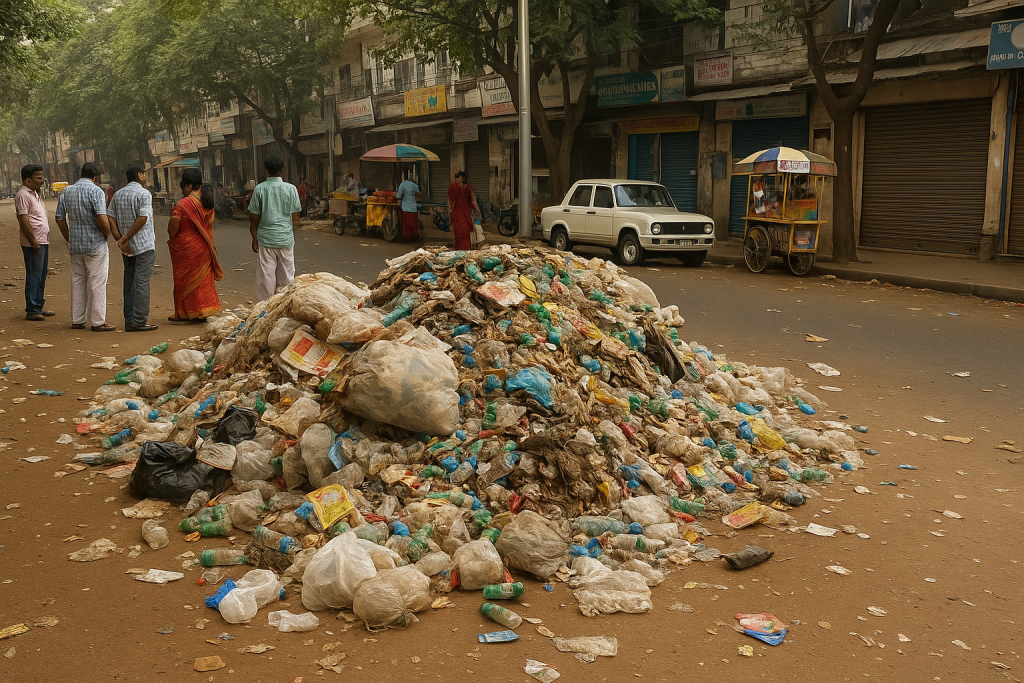
The Environmental Impact of Plastic: A Growing Crisis
Plastic, once hailed as a revolutionary material for its durability, versatility, and cost-effectiveness, has become a cornerstone of modern life. Plastic is everywhere, from packaging and household items to medical equipment and electronics. However, the very qualities that make it so useful—its durability and resistance to degradation—also make it one of the most serious environmental challenges facing the planet today.
The Scale of Plastic Production and Waste
Since large-scale plastic production began in the mid-20th century, the world has produced over 9 billion metric tons of plastic. Of this staggering amount, only a small fraction—about 9%—has been recycled. Roughly 12% has been incinerated, leaving around 79% accumulating in landfills or scattered in the environment. Every year, around 300 million tons of plastic waste are produced globally, contributing to pollution in oceans, rivers, and ecosystems.
Environmental Impacts
1. Oceans and Marine Life

The most visible and well-documented environmental consequence of plastic pollution is its impact on the oceans. It is estimated that around 8 million tons of plastic enter the ocean annually. Ocean currents carry these plastics across the globe, creating massive “garbage patches,” such as the Great Pacific Garbage Patch, which is estimated to cover an area twice the size of Texas.
Plastic pollution in the oceans has devastating effects on marine life. Animals such as sea turtles, fish, and seabirds often mistake plastic debris for food. Ingesting plastic can block digestive tracts, leading to malnutrition, starvation, or death. Furthermore, plastic entanglement can cause injuries or prevent animals from moving freely, ultimately affecting their survival.
2. Terrestrial Ecosystems and Wildlife

Plastic pollution isn’t just a problem in the oceans; it also affects the land. Animals on land can mistake plastic for food or get caught in plastic waste, which can cause injuries, limit their movement, or even lead to death. When plastic is in the soil, it can harm plants by making it harder for the soil to hold water and nutrients, which is bad for farming.
Additionally, plastic waste damages habitats. Garbage dumps and landfills, often found near natural areas, disturb local ecosystems, forcing wildlife to leave or creating poor living conditions for nearby communities. Animals living close to these dumps may eat or get trapped in plastic, leading to similar problems faced by animals in the ocean.
3. Carbon Footprint and Climate Change

Plastic production is a significant driver of climate change. Nearly all plastics are made from fossil fuels, with the process of extracting, transporting, and refining oil and gas contributing to greenhouse gas emissions. It is estimated that by 2050, plastics will account for 20% of the world’s total oil consumption if current trends continue.
Additionally, the incineration of plastic waste releases harmful gases, such as carbon dioxide, methane, and toxic chemicals like dioxins and furans, into the atmosphere. These gases contribute to air pollution and global warming. Furthermore, microplastics in the ocean may interfere with the ocean’s ability to absorb carbon dioxide, further exacerbating climate change.
Solutions to the Plastic Crisis
Addressing the plastic crisis requires a multifaceted approach involving individuals, industries, and governments. Here are some potential solutions:
1. Reduce Plastic Production and Use
Reducing plastic production is a critical first step. Governments can implement policies to restrict single-use plastics, such as plastic bags, straws, and cutlery, which are among the most common items found in the environment. Consumers can also play a role by choosing reusable alternatives and supporting businesses that adopt sustainable packaging.
2. Improve Waste Management and Recycling Systems
While recycling alone cannot solve the plastic problem, improving recycling rates can help manage the waste that has already been produced. This includes investing in better waste management infrastructure, ensuring that more types of plastic can be effectively recycled, and creating markets for recycled plastic materials.
3. Innovation in Biodegradable Plastics
Biodegradable and compostable plastics offer promising alternatives to conventional plastic, but they are not a silver bullet. These materials need to be carefully designed to break down in real-world conditions, and they must be part of a broader strategy that includes reducing overall plastic consumption.
4. Clean-Up Efforts
Several organizations and initiatives are working to remove plastic waste from the environment. Ocean clean-up efforts, such as The Ocean Cleanup project, are deploying innovative technologies to remove plastic from the ocean. On land, community clean-ups and waste collection programs can help reduce plastic pollution in local environments.
Conclusion
The environmental impact of plastic is one of the most pressing issues of our time. Plastic pollution not only threatens wildlife and ecosystems but also contributes to climate change and human health risks. While the challenge is daunting, the global movement toward reducing plastic use, improving waste management, and finding innovative solutions gives hope for a future where plastic no longer harms the environment. However, it will require concerted effort from individuals, businesses, and governments to turn the tide on plastic pollution and protect the planet for future generations.

